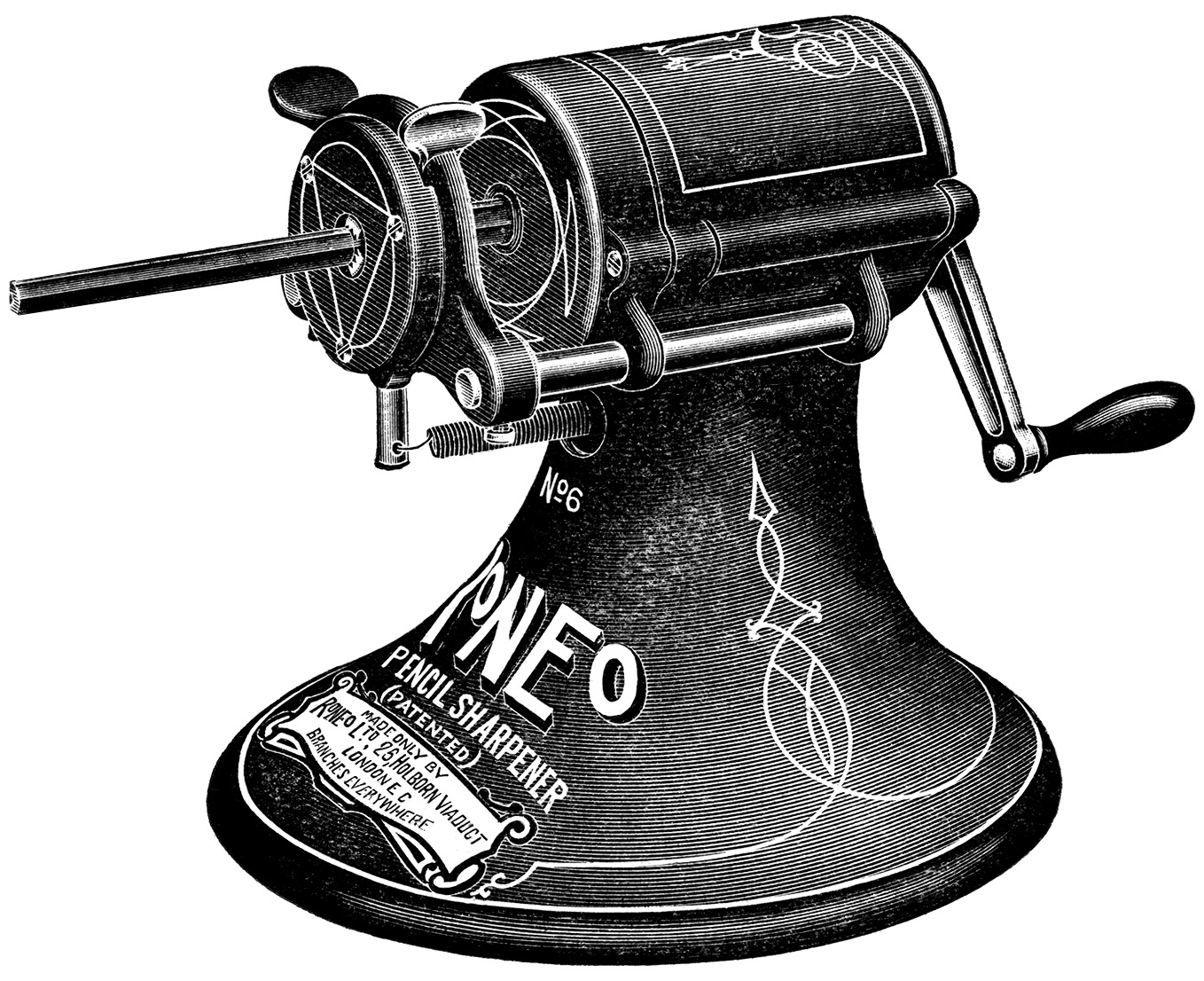The credit of inventing pencil sharpener goes to a french mathematician in 1828. It is believed that this person was Bernard Lassimone but there is debate on this name. Following his invention, other designers made improvements and refinements which includes Therry des Estwaux (also from France) who invented the first mechanical pencil sharpener in 1847. In 1855, the first American pencil sharpener was patented by Walter K. Foster.
Before the invention of pencil sharpener, people used knives to sharpen them. Pencil sharpeners made this task much easier and gave a more uniform result. Some specialized types of pencils, such as carpenter's pencils are still usually sharpened with a knife but rotating pencil sharpeners are also available for these too, where a rotating plastic collar holds the pencil in position.
 |
| Carpenter pencils and sharpener |

After this invention of sharpener , it took a while before the devices were accepted. Eureka company filed a patent for a small sharpener around in the mid 1860s. By 1865, most companies were already manufacturing pencil sharpeners. The electric sharpeners came out around 1917. In 1897, John Love patented the Love Sharpener. Its design was simple and effective. In his sharpener, put the pencil in the device and rotate. As the pencil rotated and sharpened, the shaved parts were kept in the device.

image credit: Asim18 [GFDL (http://www.gnu.org/copyleft/fdl.html), CC-BY-SA-3.0 (http://creativecommons.org/licenses/by-sa/3.0/) or CC-BY-2.5 (http://creativecommons.org/licenses/by/2.5)], from Wikimedia Commons
Today, most commercial sharpeners sold are mechanical or electric. These devices are used to sharpen non standardized pencils like those used in art. A mechanical pencil sharpener is hand-powered. The blade inside the sharpener shaves the wood of the pencil, thus sharpening the tip, while the shavings emerge through a slot along the blade edge. An important feature is a larger clearance hole at the end of the cone allowing sections of the pencil lead which break away to be removed with only minor inconvenience. Electric pencil sharpeners work on the same principle as mechanical ones, but the cylindrical cutter is (or cutters are) rotated rapidly by an electric motor. Some electric pencil sharpeners are powered by batteries rather than being plugged into a building's electrical system, making them more portable

 |
| by: Office mueum |


 |
| http://www.pinterest.com/pin/534802524472691990/ |
O.K. now - how many of you had the honored task of emptying the pencil sharpeners and cleaning the blackboards at the end of the school day?
I always figured that emptying the pencil sharpener was sort of like white-washing Tom Sawyer's fence! lol
ReplyDeleteAnd the dirty fingers from all that graphite! :0)
DeleteIncidentally, I still prefer to sharpen my carpenter's pencils with a knife, as the circular kind, understandably, puts a circular point on them, as opposed to a "blade" style point, which holds up much longer.
ReplyDeleteTrue - I like to sharpen mine with my knife, but I must admit the sharpener is faster!
DeleteNeat. I emailed you a picture of a Tru Point pencil pointer. Used by draftsman / engineers. You have to remove the wood and this puts a point on the lead. Another style pointer is a small piece of wood with a number of sheets of sandpaper attached. It is also used by draftsman and lets you put different style points on your pencil. including the chisel point like Gorges mentioned but for drawing / drafting pencils.
ReplyDeleteTo give you an idea how old the Tru Point is, the price sticker is still on it.. $4.50
Terry
Fla
Thanks for the pic - that is pretty neat, Terry - I never saw one like that! I still have wooden pencils that are sharpened by pulling a string that removes the wrapping to reveal the lead. Who would have ever thought that pencils could be so interesting!
Delete